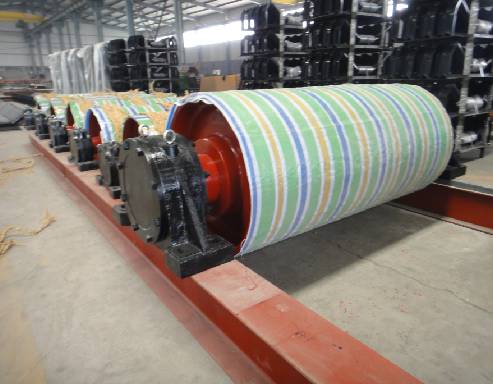 Afrikaans
Afrikaans  Albanian
Albanian  Amharic
Amharic  Arabic
Arabic  Armenian
Armenian  Azerbaijani
Azerbaijani  Basque
Basque  Belarusian
Belarusian  Bengali
Bengali  Bosnian
Bosnian  Bulgarian
Bulgarian  Catalan
Catalan  Cebuano
Cebuano  Corsican
Corsican  Croatian
Croatian  Czech
Czech  Danish
Danish  Dutch
Dutch  English
English  Esperanto
Esperanto  Estonian
Estonian  Finnish
Finnish  French
French  Frisian
Frisian  Galician
Galician  Georgian
Georgian  German
German  Greek
Greek  Gujarati
Gujarati  Haitian Creole
Haitian Creole  hausa
hausa  hawaiian
hawaiian  Hebrew
Hebrew  Hindi
Hindi  Miao
Miao  Hungarian
Hungarian  Icelandic
Icelandic  igbo
igbo  Indonesian
Indonesian  irish
irish  Italian
Italian  Japanese
Japanese  Javanese
Javanese  Kannada
Kannada  kazakh
kazakh  Khmer
Khmer  Rwandese
Rwandese  Korean
Korean  Kurdish
Kurdish  Kyrgyz
Kyrgyz  Lao
Lao  Latin
Latin  Latvian
Latvian  Lithuanian
Lithuanian  Luxembourgish
Luxembourgish  Macedonian
Macedonian  Malgashi
Malgashi  Malay
Malay  Malayalam
Malayalam  Maltese
Maltese  Maori
Maori  Marathi
Marathi  Mongolian
Mongolian  Myanmar
Myanmar  Nepali
Nepali  Norwegian
Norwegian  Norwegian
Norwegian  Occitan
Occitan  Pashto
Pashto  Persian
Persian  Polish
Polish  Portuguese
Portuguese  Punjabi
Punjabi  Romanian
Romanian  Russian
Russian  Samoan
Samoan  Scottish Gaelic
Scottish Gaelic  Serbian
Serbian  Sesotho
Sesotho  Shona
Shona  Sindhi
Sindhi  Sinhala
Sinhala  Slovak
Slovak  Slovenian
Slovenian  Somali
Somali  Spanish
Spanish  Sundanese
Sundanese  Swahili
Swahili  Swedish
Swedish  Tagalog
Tagalog  Tajik
Tajik  Tamil
Tamil  Tatar
Tatar  Telugu
Telugu  Thai
Thai  Turkish
Turkish  Turkmen
Turkmen  Ukrainian
Ukrainian  Urdu
Urdu  Uighur
Uighur  Uzbek
Uzbek  Vietnamese
Vietnamese  Welsh
Welsh  Bantu
Bantu  Yiddish
Yiddish  Yoruba
Yoruba  Zulu
Zulu Understanding the Function and Importance of Accessory Drive Belt Tensioner Pulleys
Understanding the Accessory Drive Belt Tensioner Pulley
The accessory drive belt tensioner pulley plays a crucial role in the operation of a vehicle's engine. This component ensures that the accessory drive belt, which powers various engine accessories such as the alternator, power steering pump, and air conditioning compressor, maintains the correct tension. Proper tension is essential for optimal performance, efficiency, and the longevity of the belt and associated components.
The Function of the Tensioner Pulley
The primary function of the accessory drive belt tensioner pulley is to apply force to the drive belt, keeping it taut to prevent slipping. The tensioner is designed to adjust automatically based on the belt's wear and load conditions. It typically consists of a spring mechanism that compensates for fluctuations in the belt's tension due to engine vibration or changes in accessory load.
If the tensioner pulley fails or becomes worn, it can lead to several problems. A loose belt may slip, reducing the efficiency of the accessories it drives and leading to potential engine performance issues. Conversely, if the belt is too tight, it can put excess strain on the pulleys and the accessories, potentially causing premature failure.
Signs of a Failing Tensioner Pulley
There are several signs that may indicate a failing accessory drive belt tensioner pulley. One of the most common symptoms is a squealing or chirping noise coming from the engine bay. This sound often indicates that the belt is slipping due to insufficient tension. Additionally, a visible wear pattern on the drive belt or fraying edges may suggest that the tensioner is not functioning properly.
accessory drive belt tensioner pulley

Another sign of tensioner pulley failure is excessive movement or play in the pulley itself. If you can move the pulley with your hands or notice that it does not spin freely, it may be time to replace the tensioner. Moreover, if dashboard warning lights related to engine performance or battery charging appear, this could signal an issue with the accessories driven by the belt.
Replacement and Maintenance
Replacing a faulty accessory drive belt tensioner pulley is crucial for maintaining engine performance and reliability. Most mechanics recommend replacing the tensioner pulley at the same time as the drive belt, as they both undergo similar wear and tear. Regular inspection of the tensioner and drive belt during routine maintenance can help catch potential issues before they lead to more significant problems.
When replacing the tensioner pulley, it's important to use high-quality parts that meet or exceed the manufacturer's specifications. Many vehicle manufacturers recommend specific brands or types of tensioners, so always consult your vehicle's service manual for guidance.
Conclusion
The accessory drive belt tensioner pulley may seem like a small component, but its impact on vehicle performance is significant. By keeping the drive belt properly tensioned, it ensures the smooth operation of vital engine accessories, which can ultimately affect fuel efficiency and overall engine health. Understanding the function and importance of the tensioner pulley is essential for vehicle owners aiming to keep their engines running smoothly.
Regular inspection and maintenance of the tensioner and drive belt can prevent unexpected breakdowns and costly repairs. Always stay attentive to any symptoms of wear or malfunction, and consult with a professional mechanic if you suspect an issue. By prioritizing the health of your accessory drive belt system, you can secure the consistent performance and reliability of your vehicle for years to come.
-
Revolutionizing Conveyor Reliability with Advanced Rubber Lagging PulleysNewsJul.22,2025
-
Powering Precision and Durability with Expert Manufacturers of Conveyor ComponentsNewsJul.22,2025
-
Optimizing Conveyor Systems with Advanced Conveyor AccessoriesNewsJul.22,2025
-
Maximize Conveyor Efficiency with Quality Conveyor Idler PulleysNewsJul.22,2025
-
Future-Proof Your Conveyor System with High-Performance Polyurethane RollerNewsJul.22,2025
-
Driving Efficiency Forward with Quality Idlers and RollersNewsJul.22,2025





























